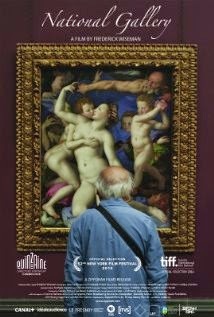 In a sense Frederick Wiseman was the wrong person to make National Gallery, which is currently playing at Film Forum.
In a sense Frederick Wiseman was the wrong person to make National Gallery, which is currently playing at Film Forum.
His signature reticence, characterized by a total lack of narration, becomes the work of art itself. In other films about schools, hospitals, the welfare system, an insane asylum (Titicut Follies), La Comedie-Francaise, and even the Crazy Horse in Paris, Wiseman's almost diaphanous docu-novel style with its omniscient seemingly absent author, lets the content breathe.
The feeling of seeing a Wiseman film is that of being parachuted into a war zone; the absence of plot, of a beginning, middle or end is mitigated by leitmotifs that create a music. But here the subject is looking itself and at times you end up gazing admiringly at the film, more than the collocation of art works comprising its subject, London's National Gallery. Frank Lloyd Wright's architecture in the Guggenheim has often been criticized as competing with and also being unfriendly to art. National Gallery is hardly an unfriendly witness, but in a museum which exhibits many da Vincis, the film is a "Mona Lisa," continually calling attention to its own enigmatic gaze.
All that being said National Gallery is amongst many things a Thomas Struth party. Struth as you may recall is the a photographer who records people looking at art and National Gallery's portraits of people watching Rembrandt portraits and other masterpieces are a singularly affecting part of the movie (in one an attendee with earphones is caught gazing at a docent giving a lecture he can't hear).
The recent The New Rijksmuseum film portrayed another art institution with a similarly broad canvas, but it had an axe to grind, in terms of the museum's relationship to its surrounding environment. The New Rijksmuseum is to the National Gallery what Ibsen's An Enemy of the People is to say O'Neill Long Day's Journey Into Night. National Gallery, which includes a moving scene where a class of blind and visually impaired people are lectured on a Pissarro, ultimately deals with museums and museum going in such as way as to demonstrate what one of Wiseman's subjects calls "a wonderful opportunity to study the human condition."
{This was originally submitted to The Screaming Pope, Francis Levy's blog of rants and reactions to contemporary politics, art and culture}